
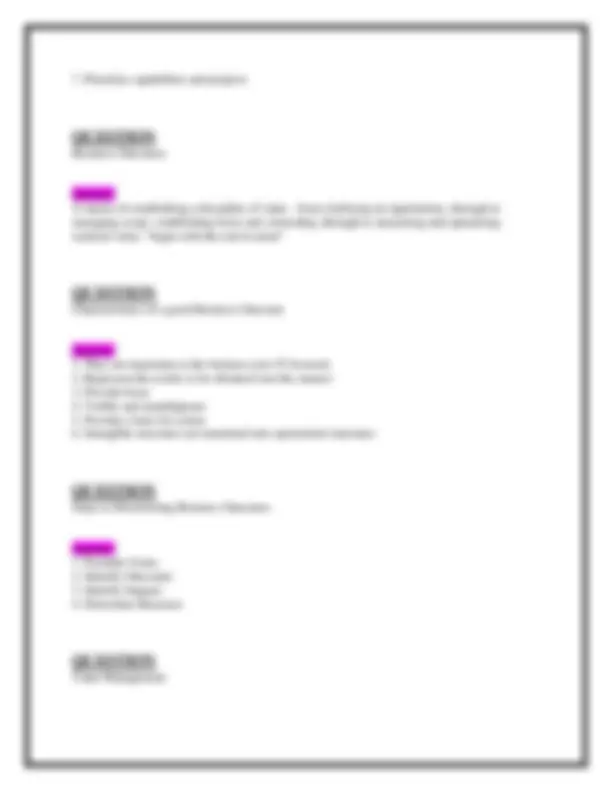
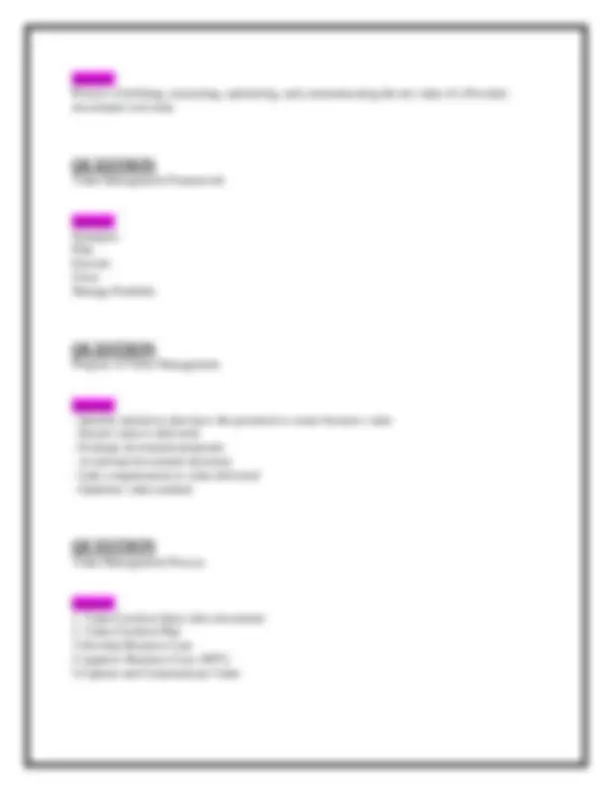
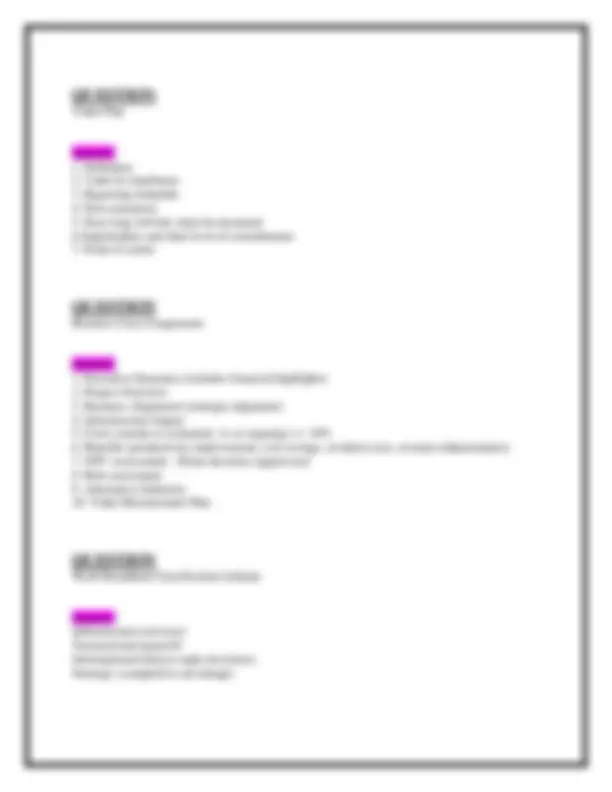
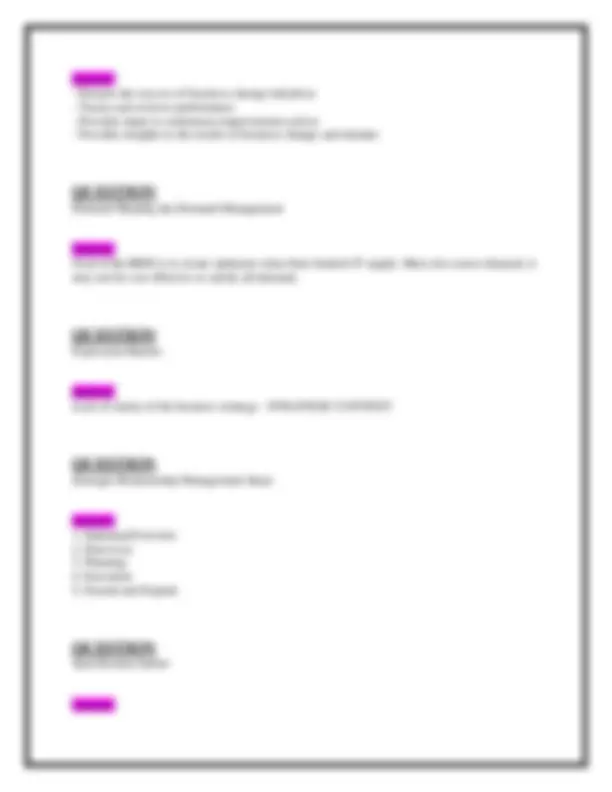
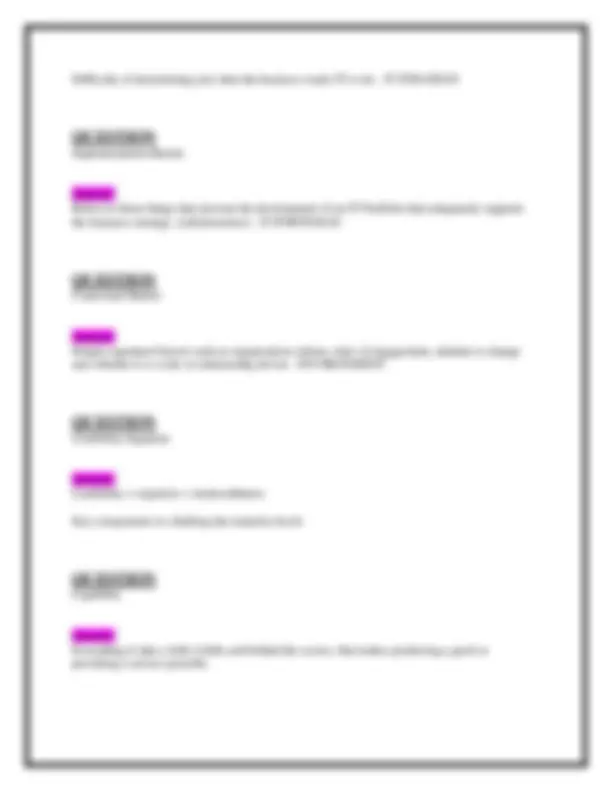
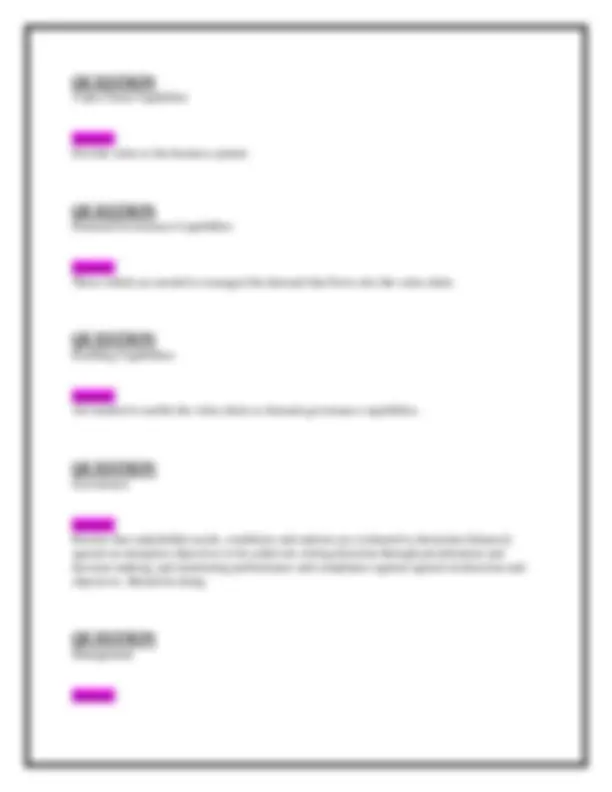
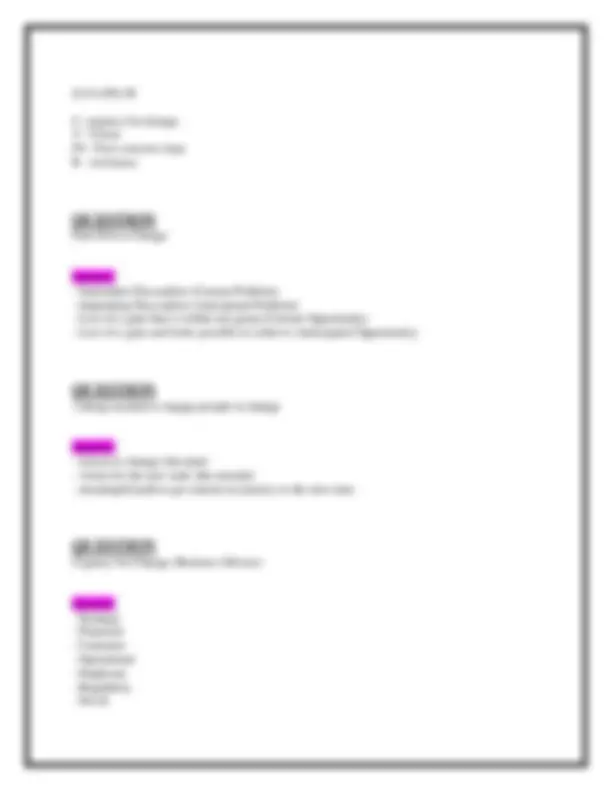
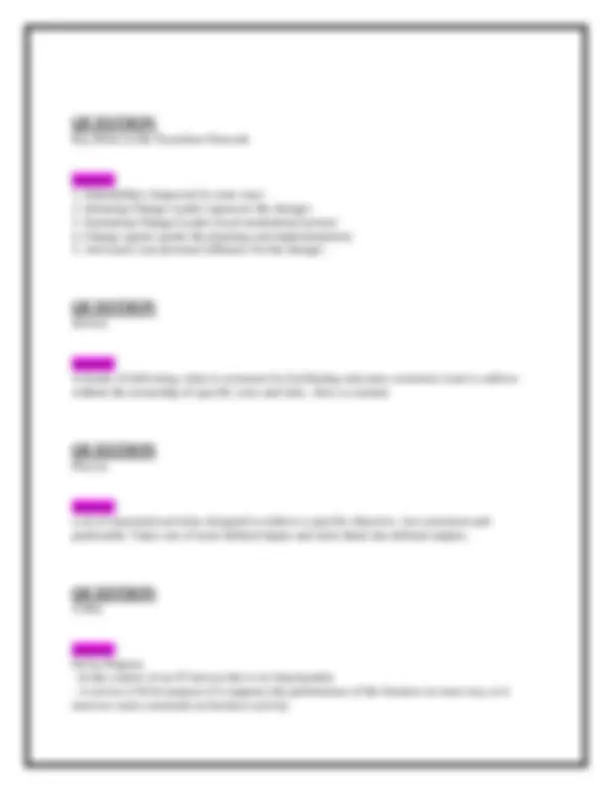
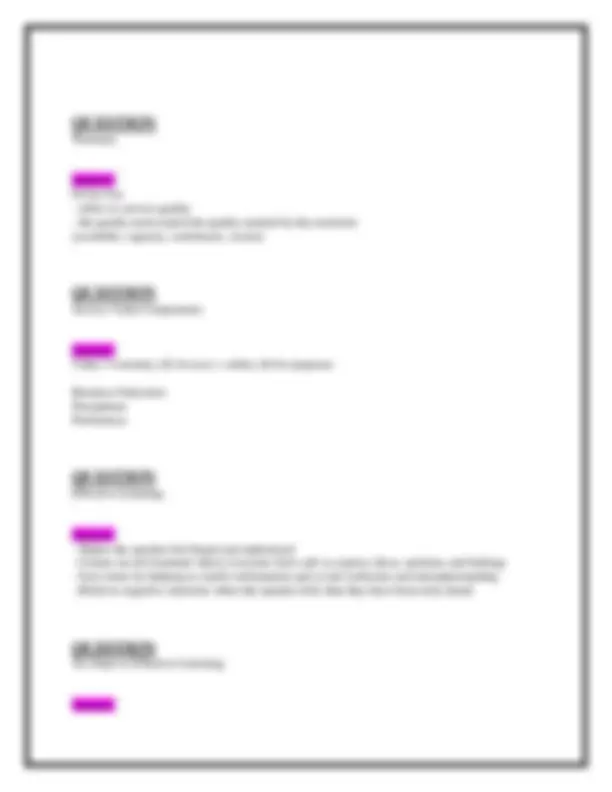
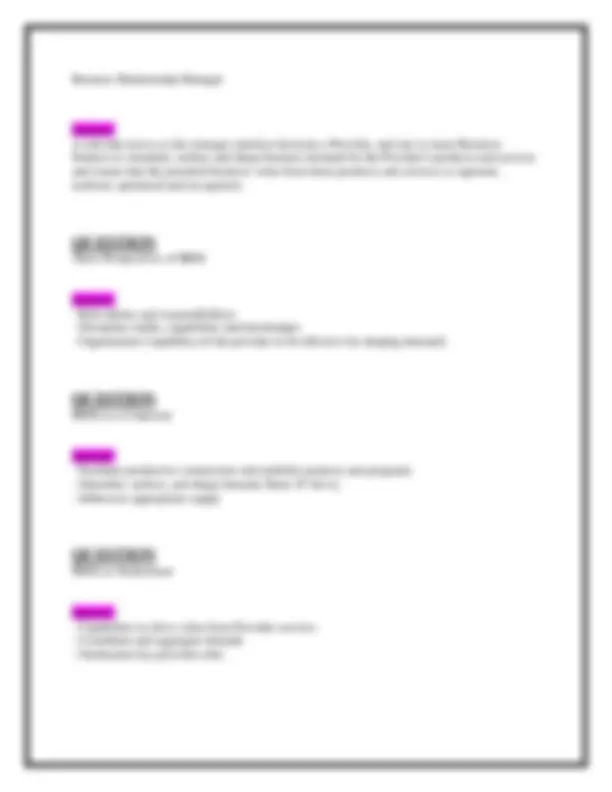
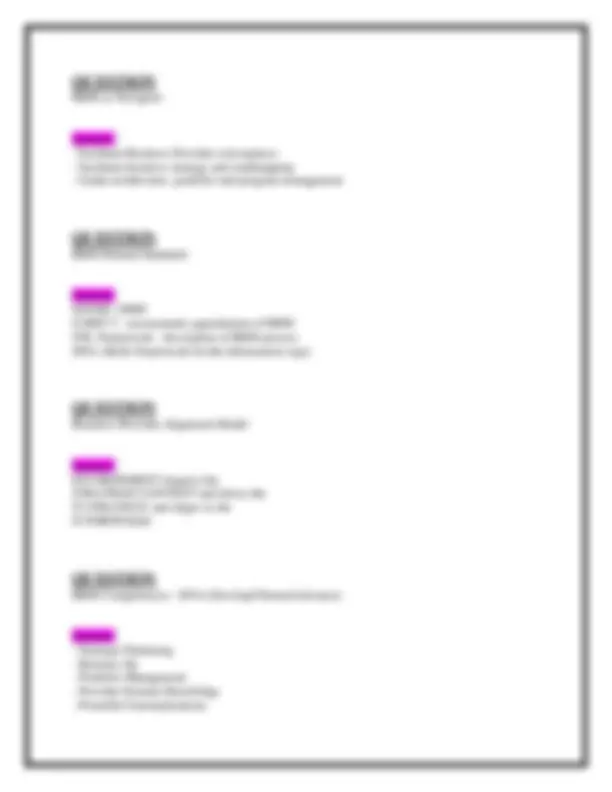
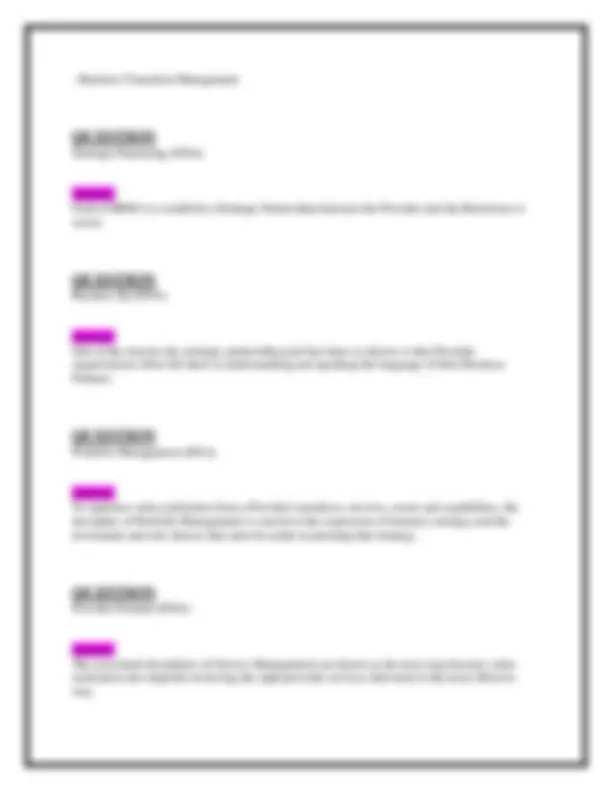
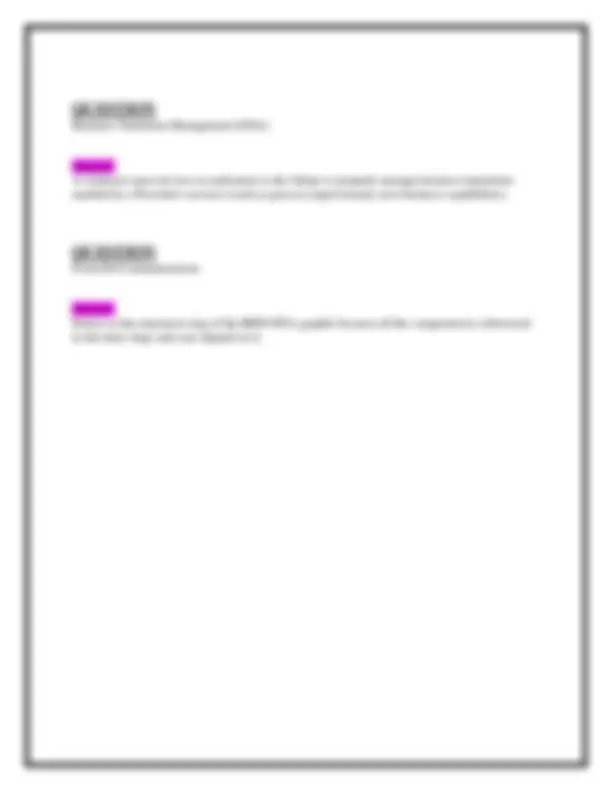


Study with the several resources on Docsity

Earn points by helping other students or get them with a premium plan


Prepare for your exams
Study with the several resources on Docsity

Earn points to download
Earn points by helping other students or get them with a premium plan
Community
Ask the community for help and clear up your study doubts
Discover the best universities in your country according to Docsity users
Free resources
Download our free guides on studying techniques, anxiety management strategies, and thesis advice from Docsity tutors
Business Relationship Manager Professional (BRMP) Certification Exam Prep (NEW 2025/ 2026) Questions and Verified Answers- 100% Correct QUESTION Customer Value Hierarchy Model Answer: Table Stakes Satisfiers Differentiators QUESTION Relationship Strategy on a Page (RSOAP) Answer: -Reach mutual understanding of goals and means to achieve them - Clarifies commitments and expectations - Defines a road map for achieving goals QUESTION RSOAP Overiew (5 sections) Answer: 1) Shared Vision 2) Relationship Characteristics 3) Performance Measures 4) Key Initiatives 5) Operating Principles
Typology: Exams
1 / 21

This page cannot be seen from the preview
Don't miss anything!














Customer Value Hierarchy Model Answer: Table Stakes Satisfiers Differentiators
Relationship Strategy on a Page (RSOAP) Answer:
RSOAP Overiew (5 sections) Answer:
Business Capability Answer: the expression or the articulation of the capacity, materials and expertise an organization needs in order to perform core functions. The things the business must due in order to operate.
Business Capability Roadmapping Answer: A way to clarify business capabilities needed to implement business strategy and the IT Capabilities needed to enable those business capabilities.
Overview of Business Capability Roadmapping Answer:
Business Capability Roadmapping Steps Answer:
Answer: Process of defining, measuring, optimizing, and communicating the net value of a Provider investment over time.
Value Management Framework Answer: Strategize Plan Execute Close Manage Portfolio
Purpose of Value Management Answer:
Value Management Process Answer:
Value Plan Answer:
Business Case Components Answer:
Weill Broadbent Classification Scheme Answer: Infrastructure (services) Transactional (payroll) Informational (data to make decisions) Strategic (competitive advantage)
L4: Trusted Advisor L5: Strategic Partner
Demand Shaping Discipline Answer:
Exploring Discpline Answer:
Servicing Discipline Answer:
Value Harvesting Discipline
Answer:
Demand Shaping aka Demand Management Answer: Goal of the BRM is to create optimum value from limited IT supply. Must also assess demand, it may not be cost effective to satisfy all demand.
Expression Barrier Answer: Lack of clarity of the business strategy - STRATEGIC CONTEXT
Strategic Relationship Management Steps Answer:
Specification barrier Answer:
Value Chain Capabilites Answer: Provide value to the business partner
Demand Governance Capabilities Answer: Those which are needed to managed the demand that flows into the value chain
Enabling Capabilities Answer: Are needed to enable the value chain or demand governance capabilities
Governance Answer: Ensures that stakeholder needs, conditions and options are evaluated to determine balanced, agreed-on enterprise objectives to be achieved; setting direction through prioritization and decision making; and monitoring performance and compliance against agreed-on direction and objectives. Should be doing
Management Answer:
Plans, builds, runs and monitors activities in alignment with the direction set by the governance body to achieve the enterprise objectives. How is should be doing it
IT Governance Benefits Answer:
Objectives of Business-IT Governance Answer:
IT Governance Domains Answer: Business IT Principles Enterprise Architecture IT Infrastructure Strategies Business Application Needs IT Investment Prioritization and Value Relization
(UxVxFS)>R U- urgency for change V- Vision FS - First concrete steps R - resistance
Pain Drives Change Answer:
3 things needed to engage people in change Answer:
Urgency for Change (Business Drivers) Answer:
Key Roles in the Transition Network Answer:
Service Answer: A means of delivering value to customers by facilitating outcomes customers want to achieve without the ownership of specific costs and risks. Also co-created.
Process Answer: a set of structured activities designed to achieve a specific objective. Are consistent and predictable. Takes one of more defined inputs and turns them into defined outputs.
Utility Answer: Fit for Purpose
Impact of a Message Answer: Verbal 7% Vocal 38% Body Language 55%
Emotional Intelligence Answer: Ability to discern one's own and other people's emotions, to discriminate between different emotions and label them appropriately, and to use emotional information to guide thinking and behavior
Ethos Answer: Ethical Proofs: the credibility that the speaker or author establishes. (Demonstrating a knowledge of the business. Holding a shared belief. Respect the customer)
Pathos
Answer: Emotional Proof: form of persuasion based on emotions of the audience using storytelling (BRM needs to be passionate about a course of action is more likely to persuade the audience)
Logos Answer: Logical Proofs: logic or reasoned argument to construct a proof (business case)
Six Principles of Persuasion Answer:
Influence Process Technique - Issue Resolution Answer: Framing - define the issue, establish common ground and shared goals Dialog - build on shared goals (set-up, wrap-up and check-up) Enrollment - extends the dialogue to include stakeholders Re-set - involving other parties as it evolves
BRM as Navigator Answer:
BRM Related Standards Answer: ISO/IEC 20000 COBIT 5 - recommends appointment of BRM ITIL Framework - description of BRM process SFIA (Skills Framework for the Information Age)
Business-Provider Alignment Model Answer: ENVIRONMENT impacts the STRATEGIC CONTEXT and drives the IT STRATEGY and aligns to the IT PORTFOLIO
BRM Competencies - DNA (Develop/Nurture/Advance) Answer:
Strategic Partnering (DNA) Answer: Goal of BRM is to establish a Strategic Partnership between the Provider and the Businesses it serves
Business IQ (DNA) Answer: One of the reasons the strategic partnership goal has been so elusive is that Provider organizations often fall short in understanding and speaking the language of their Business Partners.
Portfolio Management (DNA) Answer: To optimize value realization from a Provider's products, services, assets and capabilities, the discipline of Portfolio Management is crucial to the expression of business strategy and the investment and risk choices that must be made in pursuing that strategy.
Provider Domain (DNA) Answer: The associated disciplines of Service Management are drawn as the next ring because value realization also depends on having the right provider services delivered in the most effective way.